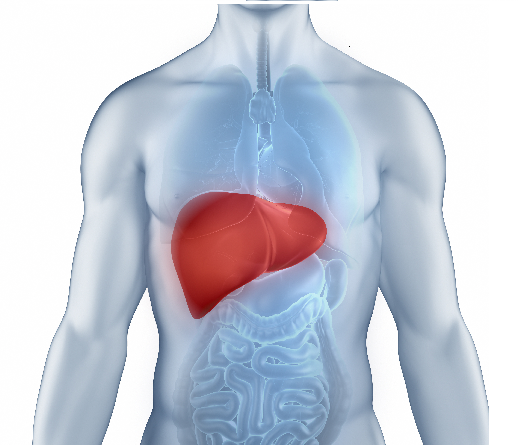Heatstroke: Symptoms and Causes
What is Heatstroke?
Heatstroke is a potentially life-threatening condition that occurs when the body’s internal temperature rises to a level that is too high for normal function. This can be caused by prolonged exposure to high temperatures or physical exertion in a hot environment and can lead to damage to the brain, heart, kidneys, and other organs.

What Causes Heatstroke?
Heatstroke is caused by prolonged exposure to high temperatures, particularly when the body is unable to cool itself down through sweating and other mechanisms. This can happen in a variety of circumstances, including:
- High temperatures: Heatstroke is most common in hot and humid climates, especially during the summer months. High temperatures can cause the body to overheat, particularly if a person is exposed to the sun for long periods of time.
- Physical activity: Engaging in intense physical activity in hot weather can also increase the risk of heatstroke. This is especially true if the person is not acclimated to the heat or is not properly hydrated.
- Dehydration: When the body loses fluids and electrolytes through sweating, it can become dehydrated. This makes it more difficult for the body to regulate its temperature and increases the risk of heatstroke.
- Certain medications: Some medications, such as antihistamines and diuretics, can interfere with the body’s ability to regulate its temperature and increase the risk of heatstroke.
- Certain medical conditions: Certain medical conditions, such as heart disease and obesity, can also increase the risk of heatstroke.
What are the symptoms of Heatstroke?
The symptoms of heatstroke can vary depending on the severity of the condition, but some common signs to look out for include:
- High body temperature: A body temperature of 104°F (40°C) or higher is a common sign of heatstroke.
- Altered mental state: Confusion, disorientation, agitation, and slurred speech are all common symptoms of heatstroke.
- Nausea and vomiting: Heatstroke can cause nausea and vomiting, which can further dehydrate the body.
- Rapid heartbeat: Heatstroke can cause the heart to beat faster than normal, as the body tries to cool down.
- Rapid breathing: The body may also try to cool itself down by breathing more rapidly.
- Headache: A headache is a common symptom of heatstroke, as are dizziness and light-headedness.
- Muscle cramps: Heatstroke can cause muscle cramps, particularly in the legs and abdomen.
- Skin changes: The skin may be hot and dry or moist and clammy, depending on the severity of the condition.
- Seizures or convulsions: In severe cases, heatstroke can cause seizures or convulsions.
If you or someone you know is experiencing these symptoms, it is important to seek medical attention immediately, as heatstroke can be life-threatening if left untreated.
What are the different types of Heatstroke?
There are two main types of heatstroke: classical heatstroke and exertional heatstroke.
- Classical heatstroke: This type of heatstroke occurs most commonly in older adults, young children, and people with chronic medical conditions such as heart disease or diabetes. Classical heatstroke typically develops over several days of exposure to high temperatures and humidity and is often associated with a lack of access to air conditioning or other cooling measures.
- Exertional heatstroke: This type of heatstroke occurs most commonly in young, healthy individuals who engage in strenuous physical activity in hot, humid conditions. Exertional heatstroke can develop quickly, sometimes within hours of starting an activity, and is often associated with a lack of acclimatization to the heat or inadequate hydration.
The symptoms and treatment of heatstroke are similar regardless of the type, and include measures such as cooling the body, rehydration, and medical monitoring to prevent complications.
How is Heatstroke diagnosed?
Heatstroke is typically diagnosed based on a combination of medical history, physical exams, and laboratory tests. Some of the tests that may be used to diagnose heatstroke include:
- Temperature measurement: A body temperature of 104°F (40°C) or higher is a common sign of heatstroke.
- Blood tests: Blood tests can help identify changes in electrolyte levels, kidney function, and other indicators of heatstroke.
- Urine tests: Urine tests can help identify dehydration and other indicators of heatstroke.
- Imaging tests: Imaging tests, such as a chest X-ray or CT scan, may be used to assess organ function and identify complications of heatstroke.
How is Heatstroke treated?
The treatment of heatstroke typically involves cooling the body, rehydration, and medical monitoring to prevent complications. Some common treatment measures include:
- Move to a cooler area: If possible, move the person to a cooler area, such as an air-conditioned building or a shaded area.
- Remove excess clothing: Remove any excess clothing to allow heat to escape from the body more easily.
- Cool the body: Use cool water or ice packs to cool the body, especially the head, neck, and groin areas. Avoid using ice directly on the skin, as this can cause further damage.
- Rehydrate: Give the person fluids, either by mouth or intravenously, to replace lost fluids and electrolytes.
- Medical monitoring: Monitor the person’s vital signs, electrolyte levels, and organ function to detect and treat any complications of heatstroke.
In severe cases of heatstroke, hospitalization may be necessary to provide more intensive monitoring and treatment. In addition to the above measures, the person may receive medications to control seizures or reduce inflammation or undergo procedures such as dialysis if organ failure occurs.
Heatstroke is a medical emergency that requires immediate treatment. If you suspect someone is experiencing heatstroke, call emergency services and move the person to a cooler location, remove any excess clothing, and try to cool the person down with cool water or ice packs while waiting for help to arrive.
Disclaimer:
This blog is for informational purposes only and should not be construed as advice or as a substitute for consulting a physician. It is not a substitute for medical advice or treatment from a healthcare professional.













